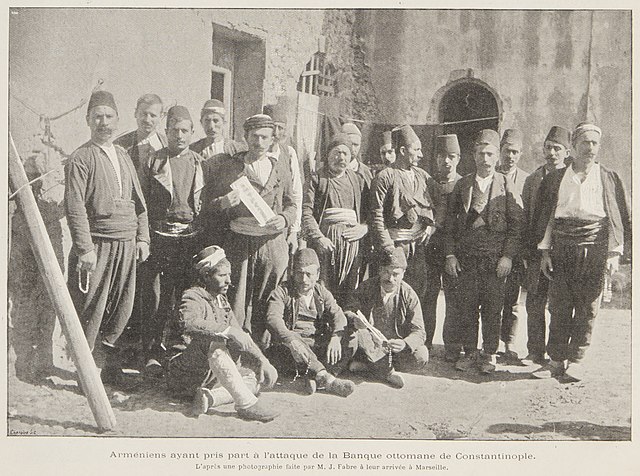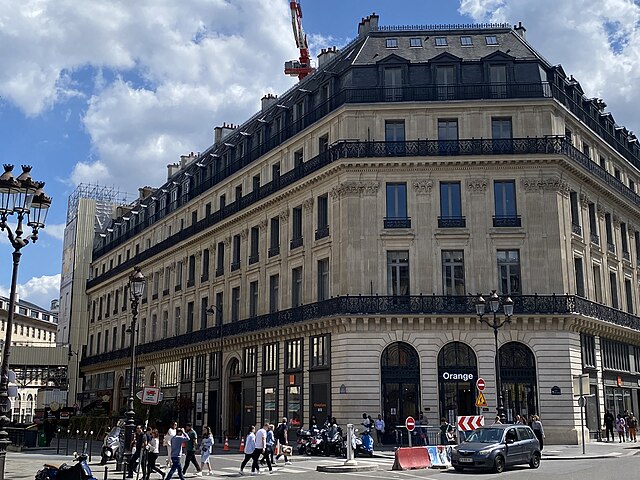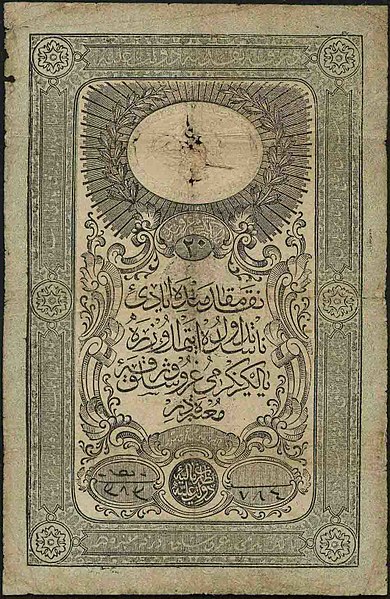Occupation of the Ottoman Bank
The occupation of the Ottoman Bank by members of the Armenian Revolutionary Federation took place in Constantinople, the capital of the Ottoman Empire on 26 August 1896. In an effort to raise further awareness and action by the major European powers, 28 armed men and women led primarily by Papken Siuni and Armen Garo took over the bank which largely employed European personnel from Great Britain and France. Stirred largely due to the inaction of the European powers in regard to Hamidian massacres started by Sultan Abdul Hamid II, the Armenian Revolutionary Federation members saw its seizure as a means to bring full attention to their plight. At the time, the Ottoman Bank served as an important financial center for both the Empire and the countries of Europe.
Imperial Ottoman Bank headquarters, 1896
Armen Garo was one of the chief planners who survived
Papken Siuni, the chief organizer of the attack.
Surviving members of the takeover after they arrived in Marseille.
The Ottoman Bank, known from 1863 to 1925 as the Imperial Ottoman Bank and correspondingly referred to by its French acronym BIO, was a bank that played a major role in the financial history of the Ottoman Empire. By the early 20th century, it was the dominant bank in the Ottoman Empire, and one of the largest in the world.
Bankalar Caddesi 11, the bank's headquarters in Constantinople (Istanbul) from 1892 to 1999
7, rue Meyerbeer, the bank's Paris office from 1870 to 1975
26 Throgmorton Street (center), designed by architect William Burnet, the London seat of the Ottoman Bank from 1872 to 1947
Paper money of the Ottoman Empire (kaime), 1852








